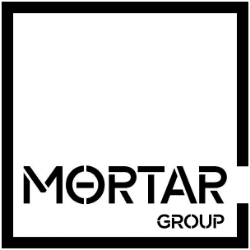Unlike the brownstones of Park Slope and Cobble Hill, the vinyl-sided rowhouses of North Brooklyn have never quite garnered the admiration of borough tastemakers. If anything, most new developments in North Brooklyn seem to make a point of distinguishing themselves from these structures.
But at 139 Meserole Street, a condominium in East Williamsburg, the architect Anthony Morena opted for a zinc shingle facade that recalls the neighborhood’s much-maligned exteriors — an approach that the development blog New York YIMBY called “vinyl revival”.
“For better or worse that is the look and feel of the ‘old’ neighborhood — the vinyl or wood-clad townhomes,” said Mr. Morena, who heads Mortar, a Manhattan-based architecture and development firm. “I liked the concept of using modern materials to mimic the original style and updating it, making it part of the design rather than an afterthought.”
Mr. Morena’s fondness for the architecture of East Williamsburg may owe something to the fact that he grew up there in the late 1970s and early 1980s, when it was a working-class community largely populated by Italian immigrants like his parents.
Now 40, Mr. Morena lives with his family in Bergen County, N.J., but he has focused his career on the neighborhood, which many view as across the Brooklyn-Queens Expressway from Williamsburg proper. Since 2001, acting as either the architect or architect and developer, Mr. Morena has completed 12 condominium projects in the area, and has another nine under construction or in the early stages of development. Of those, only 139 Meserole is done in the “vinyl revival” style, but all meld with the local architectural milieu in different ways. The Meserole Street project was designed for the developer Dragonfly Design Build.
“I try to work within the neighborhood’s constraints and fit its context,” said Mr. Morena, who had worked for the architect Joseph Pell Lombardi and the Moinian Group before hanging out his shingle. “You want the people in the area to be happy with what you’re doing.”
In another East Williamsburg project by Mr. Morena, at 167 Devoe Street, a gut-renovation of a walk-up building, limestone bricks give the exterior a subtle distinction. Sales there begin this month. His 10-unit 245 Manhattan Avenue, meanwhile, takes inspiration from the garage that once occupied the site, channeling a haute industrial vibe with enormous loft windows and Shou Sugi Ban charred wood that carries over from the exterior into the lobby.
“The neighborhood is not aesthetically beautiful like an old street in Cobble Hill, but it’s much more leafy and beautiful than the rest of Williamsburg,” said Ari Harkov, an agent with Halstead Property who lived in the area from 2007 to 2014 and is selling 167 Devoe’s six units with his partner Warner Lewis. “The vibe is calmer, chiller, not as crazy hectic.”
When Mr. Morena bought land for his first project on Ainslie Street and Bushwick Avenue in 2001, there were no condos on that side of the expressway for a pricing comparison, he said, but “construction has exploded in the last 10 years, especially the last five.”
Prices, though still lower than those in Williamsburg, have risen substantially since the condo boom in the early to mid-2000s, with creative types and young professionals drawn to the neighborhood’s less expensive housing and tree-lined streets. And though buyers have traditionally been singles or young couples starting out, there also has been a recent influx of families, brokers say.
“Condos are selling at $900 to $1,200 per square foot; around the Bedford L, it can be as high as $1,800 to $2,000 per square foot,” said Mr. Harkov, referring to the Bedford Avenue subway station that will stop service to Manhattan for 18 months starting in January 2019 for major repairs to the L line. Prices at 167 Devoe start at $795,000 for a 714-square-foot one-bedroom.
The impending L train shutdown may spook some developers, but Mr. Morena said he doesn’t plan to do anything differently.
Brokers, however, may need to amend their sales pitches. Although some say that brokers invented the name East Williamsburg to help drive sales, it may not be that much of a selling point, Mr. Harkov said.
“If you say, ‘I’m selling a building off the L train Graham stop,’ people will say, ‘Oh, cool,’ ” he said. “But if you said East Williamsburg, they’d be like, ‘I don’t really know where that is.’ ”

